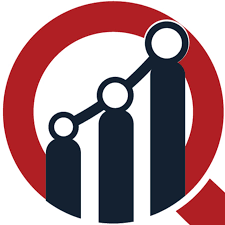Density Meter Market: Trends and Insights
In industries ranging from pharmaceuticals to food and beverage, petroleum to chemicals, the accurate measurement of density stands as a critical parameter for quality control, process optimization, and regulatory compliance. Density meters, also known as densitometers or density analyzers, play a pivotal role in ensuring precise density measurement across various applications. This article explores the trends, challenges, and opportunities shaping the US density meter market.
Understanding Density Meters:
Density meters are instruments used to measure the density of a substance by analyzing its mass per unit volume. They employ various principles, including oscillation, buoyancy, and refractive index, to determine the density of liquids, gases, and solids with high accuracy and repeatability. Density meters are utilized in diverse industries to monitor product quality, control manufacturing processes, and ensure compliance with industry standards and regulations.
Market Dynamics:
The density meter market is influenced by several key factors:
- Quality Assurance and Process Control: Industries such as pharmaceuticals, chemicals, and beverages rely on density meters for quality assurance and process control, ensuring product consistency, purity, and compliance with specifications.
- Safety and Regulatory Compliance: Regulatory agencies and industry standards mandate the accurate measurement of density for products such as petroleum, fuels, and hazardous chemicals to ensure safety, environmental protection, and regulatory compliance.
- Demand for Automation and Integration: The increasing adoption of automation and digitalization in manufacturing drives the demand for density meters with advanced features such as digital interfaces, data logging, and connectivity with control systems and process automation platforms.
- Technological Advancements: Ongoing advancements in sensor technology, data processing algorithms, and miniaturization enable the development of compact, high-performance density meters with improved accuracy, speed, and ease of use.
Market Trends:
Several trends are shaping the density meter market:
- Multifunctionality and Versatility: Density meters with multifunctional capabilities, such as simultaneous measurement of density, concentration, and viscosity, are gaining popularity for their versatility and cost-effectiveness in diverse applications.
- Integration with Process Analytical Technology (PAT): Integration of density meters with PAT solutions enables real-time monitoring, control, and optimization of manufacturing processes, facilitating rapid decision-making and quality improvements.
- Portable and Handheld Solutions: The demand for portable and handheld density meters is increasing, particularly in field applications such as oil and gas exploration, environmental monitoring, and beverage production, where portability and mobility are essential.
- Focus on Hygiene and Cleanability: In industries such as food and beverage and pharmaceuticals, there is a growing emphasis on hygienic design and cleanability in density meters to prevent contamination, ensure product integrity, and comply with sanitation standards.
Market Challenges:
Despite the positive growth outlook, the density meter market faces certain challenges:
- Cost Constraints: The initial cost of density meters, particularly those with advanced features and high accuracy, may be prohibitive for some users, leading to price sensitivity and budget constraints, particularly in cost-sensitive industries.
- Calibration and Maintenance: Calibration and maintenance of density meters require specialized expertise, equipment, and periodic recalibration to maintain accuracy and reliability, posing challenges for users without dedicated calibration facilities or trained personnel.
- Compatibility and Standardization: Ensuring compatibility and standardization of density meters with industry-specific measurement units, calibration standards, and data interfaces can be challenging, particularly in global markets with diverse regulatory requirements and measurement conventions.
- Environmental Factors: Environmental factors such as temperature fluctuations, vibration, and electromagnetic interference (EMI) can affect the performance and accuracy of density meters, requiring environmental controls and protective measures to ensure reliable operation.
Future Outlook:
The future of the density meter market looks promising, driven by technological innovation, increasing automation, and the demand for accurate and reliable density measurement solutions across industries. Key areas of focus for market players include:
- Development of Smart and Connected Devices: Continued innovation in smart density meters with IoT connectivity, wireless communication, and cloud-based analytics will enable real-time monitoring, predictive maintenance, and remote control capabilities.
- Expansion into Emerging Markets: Opportunities for market expansion exist in emerging economies experiencing rapid industrialization, urbanization, and infrastructure development, where demand for quality control and process optimization solutions is on the rise.
- Focus on Sustainability and Green Technology: Embracing sustainable practices in the design, manufacturing, and disposal of density meters, such as energy-efficient components, recyclable materials, and eco-friendly packaging, will appeal to environmentally conscious customers and support corporate sustainability goals.
- Integration with Industry 4.0 Initiatives: Integration of density meters with Industry 4.0 initiatives, such as digital twins, predictive analytics, and autonomous systems, will enable data-driven decision-making, process optimization, and continuous improvement in manufacturing and process industries.


